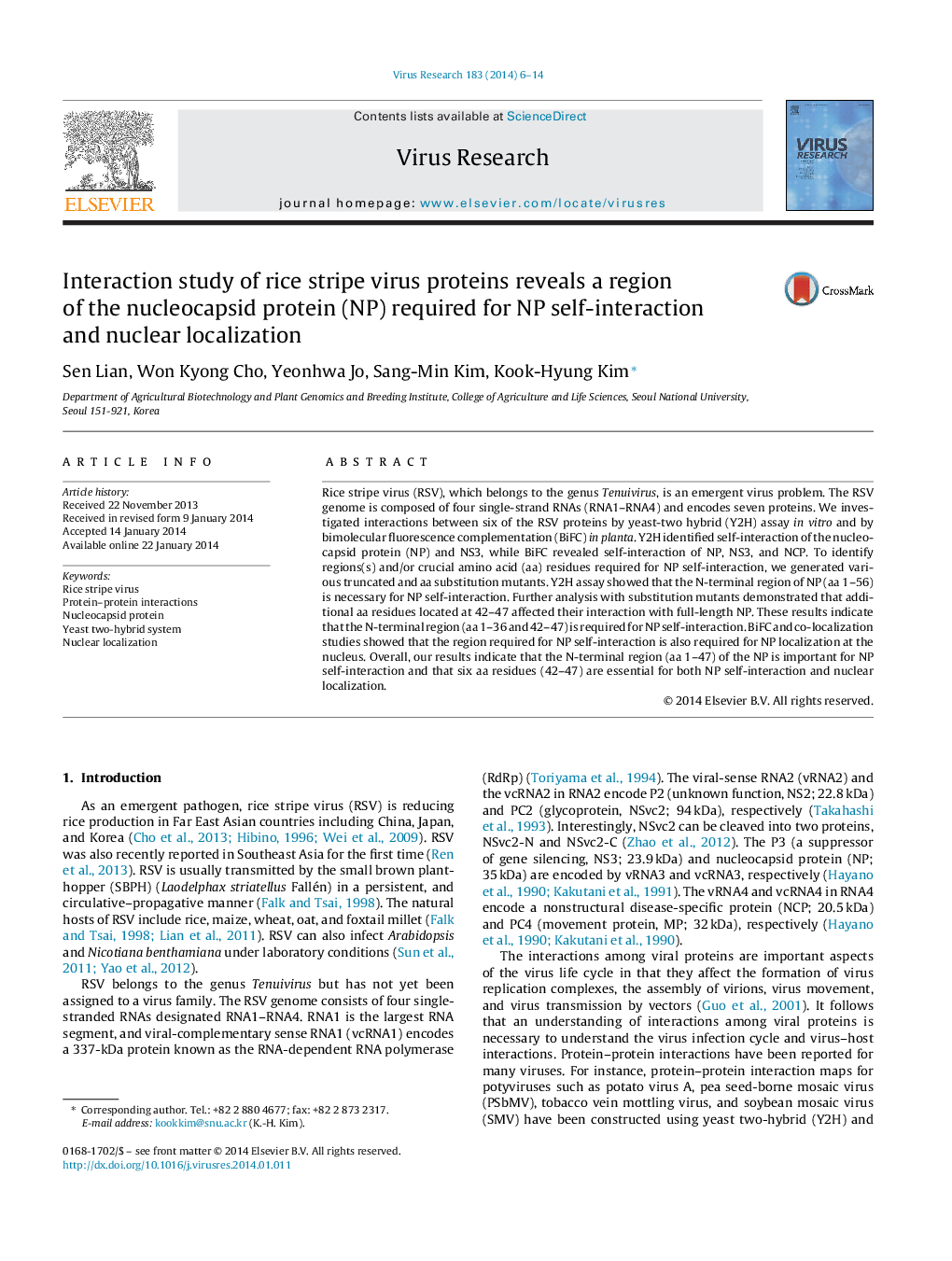| Article ID | Journal | Published Year | Pages | File Type |
|---|---|---|---|---|
| 3428469 | Virus Research | 2014 | 9 Pages |
•We investigated interactions between six RSV proteins.•We identified self-interaction of three proteins such as NP, NS3, and NCP.•The N-terminal region (aa 1–47) of the NP is important for NP self-interaction.•Six aa residues (42–47) are required for self-interaction and nucleus localization.
Rice stripe virus (RSV), which belongs to the genus Tenuivirus, is an emergent virus problem. The RSV genome is composed of four single-strand RNAs (RNA1–RNA4) and encodes seven proteins. We investigated interactions between six of the RSV proteins by yeast-two hybrid (Y2H) assay in vitro and by bimolecular fluorescence complementation (BiFC) in planta. Y2H identified self-interaction of the nucleocapsid protein (NP) and NS3, while BiFC revealed self-interaction of NP, NS3, and NCP. To identify regions(s) and/or crucial amino acid (aa) residues required for NP self-interaction, we generated various truncated and aa substitution mutants. Y2H assay showed that the N-terminal region of NP (aa 1–56) is necessary for NP self-interaction. Further analysis with substitution mutants demonstrated that additional aa residues located at 42–47 affected their interaction with full-length NP. These results indicate that the N-terminal region (aa 1–36 and 42–47) is required for NP self-interaction. BiFC and co-localization studies showed that the region required for NP self-interaction is also required for NP localization at the nucleus. Overall, our results indicate that the N-terminal region (aa 1–47) of the NP is important for NP self-interaction and that six aa residues (42–47) are essential for both NP self-interaction and nuclear localization.
Graphical abstractFigure optionsDownload full-size imageDownload as PowerPoint slide
